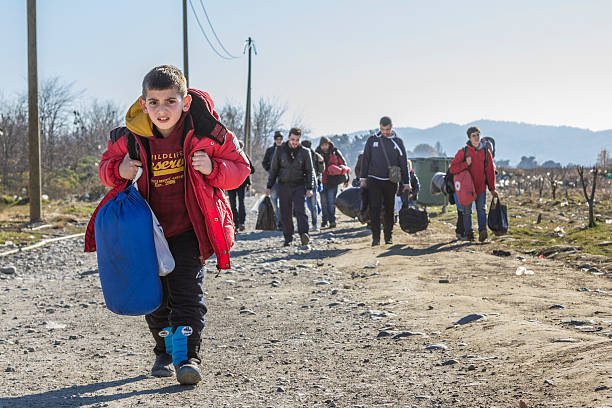From Classroom to the World: Raising Elementary Students’ Awareness of War-Affected Children in Syria

s2dikdas.fip.unesa.ac.id SURABAYA – The Syrian conflict has left a generation of children facing unimaginable hardships, from displacement and hunger to the loss of education. Although the war might seem distant from Indonesia, its effects provide an opportunity for educators to inspire empathy and global awareness in elementary school students. By introducing students to the challenges faced by war-affected children, teachers can nurture a sense of global responsibility and compassion in young learners.
The Need for Awareness
Global citizenship education is
more critical than ever in today’s interconnected world. Introducing students
to global issues, such as the plight of Syrian children, expands their
worldview, helping them understand the shared humanity that connects people
across borders.
Children in Syria face
extraordinary challenges, including limited access to education, malnutrition,
and the psychological toll of living in a conflict zone. These realities are
stark contrasts to the relative safety and stability enjoyed by many Indonesian
students. By exploring these disparities, teachers can cultivate empathy and
foster a desire among students to contribute positively to the global
community.
Practical Strategies for
Raising Awareness
- Storytelling to Build Empathy
Stories about Syrian children can create a bridge between distant realities and students’ immediate understanding. Teachers can share age-appropriate narratives focusing on themes like resilience, hope, and the power of community.
For example, the story of a young
girl who continues to dream of becoming a doctor despite losing her school in
the conflict can inspire students to value their own education. Teachers can
guide discussions around questions such as, “What challenges does she face?”
and “How can people around the world help children like her?”
- Role-Playing Activities
Role-playing allows students to experience scenarios faced by children in conflict zones, fostering a deeper understanding of their struggles. In a classroom simulation, students might assume the roles of displaced families, exploring the challenges of finding food, shelter, and education.
This hands-on activity encourages
critical thinking and teamwork while instilling a sense of empathy for others.
Teachers can debrief by asking students how they felt during the exercise and
what solutions they might propose to address such challenges.
- Art and Creative Projects
Art provides a platform for students to express their understanding of complex issues. Teachers can ask students to create drawings, posters, or poems inspired by the stories of Syrian children. For example, students might design posters promoting peace or write letters of encouragement to children living in refugee camps.
These creative projects not only
deepen students’ emotional connection to the topic but also provide a way to
share their learning with the broader school community.
- Interdisciplinary Lessons
Raising awareness of global issues can be integrated across subjects to create a comprehensive learning experience. In social studies, students can learn about Syria’s geography and cultural heritage, while in science, they can explore topics like clean water access or nutrition. Language arts lessons can include reading and writing activities centered on stories of resilience.
This interdisciplinary approach
helps students see the connections between different aspects of global
challenges, enhancing their critical thinking skills.
- Collaborative Community Projects
Engaging students in projects that benefit local or global communities reinforces the importance of taking action. For example, students might organize a fundraiser to support humanitarian efforts for Syrian children or participate in a letter-writing campaign advocating for peace.
These activities empower students
to see themselves as agents of change, instilling a sense of pride and
responsibility in contributing to solutions.
Overcoming Challenges
Teaching about sensitive topics
like war requires careful planning to ensure the content is age-appropriate and
constructive. Educators should focus on stories of hope and resilience rather
than overwhelming students with the severity of the issues.
Another challenge is making the
topic relevant to students’ lives. Teachers can draw parallels between the
challenges faced by Syrian children and those faced by vulnerable communities
in Indonesia, highlighting shared struggles and the universal need for
compassion and support.
Schools also play a vital role in
supporting teachers through professional development and access to resources.
Collaborative partnerships with humanitarian organizations can provide valuable
materials and insights for designing impactful lessons.
The Impact on Students
By raising awareness about the
plight of Syrian children, educators help students develop empathy, critical
thinking, and a sense of global responsibility. These lessons prepare young
learners to navigate a complex and interconnected world, equipping them with
the skills and values needed to contribute to a more compassionate society.
Students who understand the
struggles of war-affected children are more likely to value their own
privileges and seek ways to support those in need. This perspective shift
encourages a lifelong commitment to helping others and advocating for justice.
The Syrian conflict, while a
distant reality for Indonesian students, offers valuable lessons in resilience,
empathy, and the importance of humanitarian action. By bringing these lessons
into the classroom, educators can inspire young learners to care about global
issues and take meaningful actions to support those in need.
Through storytelling,
role-playing, creative projects, and interdisciplinary learning, teachers can
create an engaging and impactful curriculum that bridges the gap between local
and global perspectives. In doing so, they prepare students not only to succeed
academically but also to become compassionate and responsible global citizens.
Author: Annas Solihin, S.Pd.
Photo Documentation: istock